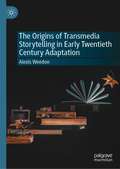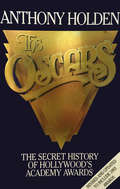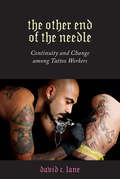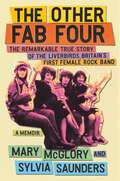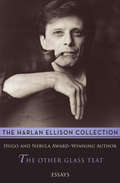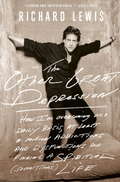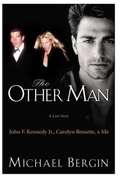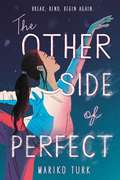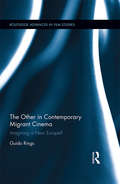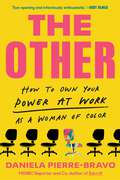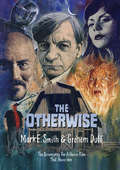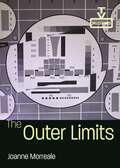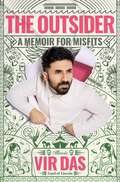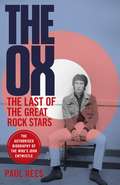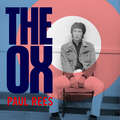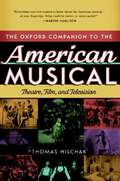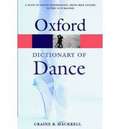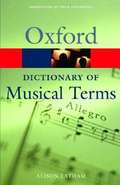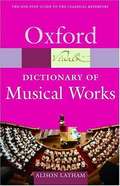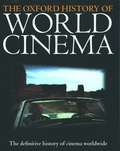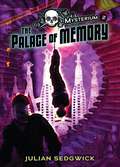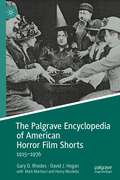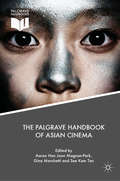- Table View
- List View
The Origins of Transmedia Storytelling in Early Twentieth Century Adaptation
by Alexis WeedonThis book explores the significance of professional writers and their role in developing British storytelling in the 1920s and 1930s, and their influence on the poetics of today’s transmedia storytelling. Modern techniques can be traced back to the early twentieth century when film, radio and television provided professional writers with new formats and revenue streams for their fiction. The book explores the contribution of four British authors, household names in their day, who adapted work for film, television and radio. Although celebrities between the wars, Clemence Dane, G.B. Stern, Hugh Walpole and A.E.W Mason have fallen from view. The popular playwright Dane, witty novelist Stern and raconteur Walpole have been marginalised for being German, Jewish, female or gay and Mason’s contribution to film has been overlooked also. It argues that these and other vocational authors should be reassessed for their contribution to new media forms of storytelling. The book makes a significant contribution in the fields of media studies, adaptation studies, and the literary middlebrow.
The Oscars
by Anthony HoldenIt is just thirteen inches tall and weighs eight pounds, yet the Oscar has come to exert an hypnotic hold over film performers and audiences alike. This book uses the narrative story of an individual year as the basis of a much broader and historical canvas, to present a portrait of the film world today, and its personalities, finances and power-struggles. It also includes detailed lists of Oscar facts and figures, winners and losers. The author's other books include best-selling biographies of Prince Charles and Laurence Olivier.
The Oscars
by Anthony HoldenIt is just thirteen inches tall and weighs eight pounds, yet the Oscar has come to exert an hypnotic hold over film performers and audiences alike. This book uses the narrative story of an individual year as the basis of a much broader and historical canvas, to present a portrait of the film world today, and its personalities, finances and power-struggles. It also includes detailed lists of Oscar facts and figures, winners and losers. The author's other books include best-selling biographies of Prince Charles and Laurence Olivier.
The Other End of the Needle: Continuity and Change among Tattoo Workers (Inequality at Work: Perspectives on Race, Gender, Class, and Labor)
by David C. LaneThe Other End of the Needle demonstrates that tattooing is more complex than simply the tattoos that people wear. Using qualitative data and an accessible writing style, sociologist Dave Lane explains the complexity of tattoo work as a type of social activity. His central argument is that tattooing is a social world, where people must be socialized, manage a system of stratification, create spaces conducive for labor, develop sets of beliefs and values, struggle to retain control over their tools, and contend with changes that in turn affect their labor. Earlier research has examined tattoos and their meanings. Yet, Lane notes, prior research has focused almost exclusively on the tattoos—the outcome of an intricate social process—and have ignored the significance of tattoo workers themselves. "Tattooists," as Lane dubs them, make decisions, but they work within a social world that constrains and shapes the outcome of their labor—the tattoo. The goal of this book is to help readers understand the world of tattoo work as an intricate and nuanced form of work. Lane ultimately asks new questions about the social processes occurring prior to the tattoo’s existence.
The Other Fab Four: The Remarkable True Story of the Liverbirds, Britain's First Female Rock Band
by Mary McGlory Sylvia SaundersFor readers of Sheila Weller&’s Girls Like Us comes a fiercely feminist, heartwarming story of friendship and music about The Liverbirds, Britain&’s first all-female rock group. The idea for Britain&’s first female rock band, The Liverbirds, started one evening in 1962, when Mary McGlory, then age 16, saw The Beatles play live at The Cavern Club in Liverpool, the nightclub famously known as the &“cradle of British pop music.&” Then and there, she decided she was going to be just like them—and be the first girl to do it. Joining ranks in 1963 with three other working-class girls from Liverpool—drummer Sylvia Saunders and guitarists Valerie Gell and Pamela Birch, also self-taught musicians determined to &“break the male monopoly of the beat world&”—The Liverbirds went on to tour alongside the Rolling Stones, the Kinks, and Chuck Berry, and were on track to hit international stardom—until life intervened, and the group was forced to disband just five years after forming in 1968. Now, Mary and Sylvia, the band&’s two surviving members, are ready to tell their stories. From that fateful night in 1962, when Mary, who once aspired to become a nun, decided to provide for her family by becoming a rich-and-famous rocker, to the circumstances that led to the band splitting up—Sylvia&’s dangerously complicated pregnancy, and the tragic accident that paralyzed Valerie&’s beau—The Liverbirds tackles family, friendship, addiction, aging, and the forces—even destiny—that initially brought the four women together.
The Other Glass Teat: Essays
by Harlan EllisonIn the late 1960s, Harlan Ellison launched a weekly column for the Los Angeles Free Press, where he uncompromisingly discussed the effects of television on modern society. He assaulted everything from television sitcoms to corrupt politicians, talk shows to military massacres. Today, more than four decades later, almost all of his criticism still holds true. Open Road and Edgeworks Abbey, Ellison's company, are proud to make this second volume of fifty-two outspoken columns widely available.
The Other Great Depression: How I'm overcoming, on a daily basis, at least a million addictions and disfunctions and finding a s
by Richard LewisA new edition?now with a new Afterword?of the honest and hilarious recovery memoir by the famously neurotic comedian and regular guest star of the hit show "Curb Your Enthusiasm"
The Other Man: A Love Story - John F. Kennedy Jr., Carolyn Bessette, and Me
by Michael BerginNow, for the first time, Michael Bergin reveals the truth behind a life lived in the limelight and a relationship shrouded in secrecy. From his early days growing up in a small blue-collar Connecticut town, to his meteoric rise as fashion icon and television star, to the passion he shared with the enigmatic and complex Carolyn Bessette, this is an inside look at the world of beauty, power, and celebrity. In 1992, Michael and Carolyn met in a bar in New York City. She was unlike any woman he had ever known - sophisticated, successful, with bewitching grace. An intensely passionate relationship was born. Not long after, Michael landed the coveted Calvin Klein underwear campaign, and his career took off. The future looked bright, and Carolyn and Michael seemed destined for a long and happy life together. But it was not to be. Four years later Michael was an international fashion icon and Carolyn was Mrs. John F. Kennedy Jr. - however, the story doesn't end there. This is the truth about their lives, a tale full of warmth, humor, heartbreak, and tragedy. Above all, The Other Man is a testament to the enduring power of love and a story about the painful choices we make with our all-too-human hearts.
The Other Side of Perfect
by Mariko TurkFor fans of Sarah Dessen and Mary H.K. Choi, this lyrical and emotionally driven novel follows Alina, a young aspiring dancer who suffers a devastating injury and must face a world without ballet—as well as the darker side of her former dream. Alina Keeler was destined to dance, but then a terrifying fall shatters her leg—and her dreams of a professional ballet career along with it.After a summer healing (translation: eating vast amounts of Cool Ranch Doritos and binging ballet videos on YouTube), she is forced to trade her pre-professional dance classes for normal high school, where she reluctantly joins the school musical. However, rehearsals offer more than she expected—namely Jude, her annoyingly attractive castmate she just might be falling for.But to move forward, Alina must make peace with her past and face the racism she experienced in the dance industry. She wonders what it means to yearn for ballet—something so beautiful, yet so broken. And as broken as she feels, can she ever open her heart to someone else?Touching, romantic, and peppered with humor, this debut novel explores the tenuousness of perfectionism, the possibilities of change, and the importance of raising your voice.
The Other in Contemporary Migrant Cinema: Imagining a New Europe? (Routledge Advances in Film Studies #46)
by Guido RingsAs a rapidly aging continent, Europe increasingly depends on the successful integration of migrants. Unfortunately, contemporary political and media discourses observe and frequently also support the development of nationalist, eurosceptic and xenophobic reactions to immigration and growing multiethnicity. Confronting this trend, European cinema has developed and disseminated new transcultural and postcolonial alternatives that might help to improve integration and community cohesion in Europe, and this book investigates these alternatives in order to identify examples of good practices that can enhance European stability. While the cinematic spectrum is as wide and open as most notions of Europeanness, the films examined share a fundamental interest in the Other. In this qualitative film analysis approach, particular consideration is given to British, French, German, and Spanish productions, and a comparison of multiethnic conviviality in Chicano cinema.
The Other: How to Own Your Power at Work as a Woman of Color
by Daniela Pierre-Bravo2023 Int'l Latino Book Award Honorable Mentions This important book focuses on how women of color, children of immigrants, and other minoritized groups are predisposed to workplace imposter syndrome—and charts a path forward for self-advocacy and advancement. For women of color and children of immigrants, who are the &“the other&” at work, there's a different threshold of belonging that creates a false feeling of inadequacy. It can lead to being overwhelmed, overworked, and overlooked. The Other shatters the unspoken expectations for you to stay in your lane and gives you the tools to build unshakable confidence and a career that excels--on your own terms. Bestselling author and MSNBC reporter Daniela-Pierre Bravo spent many years undocumented and in the shadows as an immigrant from Chile, working odd jobs to pay her way through school. Like many other women of color she became an expert shape shifter in order to chameleon her way around professional environments that felt out of reach. When Daniela became a DACA recipient, she finally felt that she&’d made it, rising through the ranks in her career. But she quickly realized that no matter how much success she achieved, she always felt she had to prove her worth as &“the other.&” In The Other, Daniela shares her journey and those of other women to help you recognize your power in the workplace outside of the white gaze. She drives you to reshape the way you think about career advancement without losing your sense of identity and helps you see how to use your differences as an advantage. Smart, revealing, and loaded with practical steps, The Other is a framework for how to effectively advocate for yourself, become your biggest believer, claim the spaces in your career that are rightfully yours.
The Otherwise: The Screenplay for a Horror Film That Never Was
by Graham Duff Mark E SmithThe first ever publication of Mark E. Smith's supernatural film treatment, co-authored with Graham Duff.In 2015 Mark E. Smith of The Fall and screenwriter Graham Duff co-wrote the script for a horror feature film called The Otherwise. The story involved The Fall recording an EP in an isolated recording studio on Pendle Hill. The Lancashire landscape is not only at the mercy of a satanic biker gang, it's also haunted by a gaggle of soldiers who have slipped through time from the Jacobite Rebellion.However, every film production company who saw the script said it was 'too weird' to ever be made. The Otherwise is weird. Yet it's also witty, shocking and genuinely scary. Now the screenplay is published for the first time, alongside photographs, drawings and handwritten notes. The volume also contains previously unpublished transcripts of conversations between Smith and Duff, where they discuss creativity, dreams, musical loves (from Can to acid house) and favourite films (from Britannia Hospital to White Heat). Smith also talks candidly about his youth and mortality, in exchanges that are both touching and extremely funny.
The Outer Limits (TV Milestones Series)
by Joanne MorrealeIn this TV Milestone, author Joanne Morreale highlights the differences of The Outer Limits (ABC 1963–65) from typical programs on the air in the 1960s. Morreale argues that the show provides insight into changes in the television industry as writers turned to genre fiction—in this case, a hybrid of science fiction and horror—to provide veiled social commentary. The show illustrates the tension between networks who wanted mainstream entertainment and the independent writer-producers, Leslie Stevens and Joseph Stefano, who wanted to use the medium to challenge viewers. In five chapters, The Outer Limitsmakes a case for the show’s deployment of gothic melodrama and science fiction tropes, unique televisual characteristics, and creative adaptation of many cultural sources to interrogate the relationship between humans and technology in a way that continues to influence contemporary debate in such shows as Star Trek, The X-Files, and Black Mirror. Underlying the arguments is the eerie notion of The Outer Limits as a disruptive force on television at the time, purposely making audiences uncomfortable. For example, in its iconic opening credit sequence a disembodied "Control Voice" claims to be taking over the television as images mimic signal interference. Other themes convey Cold War paranoia, ambivalence about the Kennedy era "New Frontier," and anxiety about the burgeoning military-industrial-governmental complex. The book points out that The Outer Limits presaged what came to be known as "quality" television. While most episodes followed the lowbrow tradition of televised science fiction by adapting previously published stories and films, the series elevated the genre by rearticulating it through themes and images drawn from myth, literature, and the art film. The Outer Limits is lucid yet accessible, well researched and argued, with enlightening discussions of specific episodes even as it gives attention to broader television history and theory. It will be of special interest to scholars and students of television and media studies, as well as fans of science fiction.
The Outsider: A Memoir for Misfits
by Vir DasBeloved comedian Vir Das shares his journey as a perpetual outsider, using humor to navigate heartbreak, failure, and the quest for belonging.When comedian and actor Vir Das found himself stranded on a pier in Cozumel, Mexico, watching his cruise ship sail away without him due to visa issues, it became a metaphor for his life: he&’s always been, and will always be, an outsider. Standing on that beach, he took in the absurdity of it all—broke, hungover, dumped, jobless, trousers full of sand. He knew the best way to deal with the situation wasn&’t to retreat. It was to laugh. Vir&’s story is one of cultural dissonance and identity exploration. As a child, he bounced from India to Lagos, Nigeria, and back again. He navigated life between worlds, never quite fitting in. You&’ve heard stories of kids who despise boarding school, but have you ever heard the story of a kid who despised it so much they faked appendicitis and went through with the surgery to get out? That&’s Vir. In Africa, he was the kid from India, and back in India, he was the kid from Africa. As the only Indian kid costarring in War and Peace on stage at Knox College in Illinois, his outsider status was undeniable. Whether he&’s washing dishes at a Grand Lux Café in Chicago, navigating Bollywood, getting cancelled by an entire country and then embraced by that country all over again, or performing on stages from New York to Mumbai to Stavanger, Norway, Vir has learned to lean way into his place as an outsider, and to find humor and meaning on the fringes. The Outsider is more than just a memoir about Vir&’s rise to comedic fame; it&’s a powerful reflection on how being a misfit can shape one&’s identity into something truly unique. Vir&’s story speaks to anyone who has ever felt out of place, serving as a testament to the resilience and humor that can arise when you resist the urge to fit in, and stay true to who you are.
The Ox: The Last of the Great Rock Stars: The Authorised Biography of The Who's John Entwistle
by Paul ReesThe definitive no-holds-barred biography of John Entwistle, The Who's legendary bass guitaristIt is an unequivocal fact that in terms of rock bands, the Beatles, the Rolling Stones and the Who represent Year Zero; the beginning of all things, ground-breakers all. To that end, John Entwistle - the Who's beloved bassist - is also without question one of the most important and influential figures in the annals of rock. He is also among an even more rarefied few by virtue of his being such a fascinating, transfixing and gloriously oversized character. However, Entwistle has not been the subject of a major biography. Likely, this was due to no-one being able to gain close access to the subject himself: the still in many other respects enigmatic Entwistle's enduring legacy has been carefully guarded by his surviving family. With the full co-operation of the Entwistle family, The Ox will correct this oversight and in doing so, shine a long overdue light on one of the single greatest, and most impactful figures in rock history.Drawing on his own notes for an unfinished autobiography that he started before his death in 2002 (and which will be quoted from extensively), as well as his personal archives and interviews with his family and friends, The Ox will give readers a never-before-seen glimpse into the two very distinct poles of John Entwistle. On the one hand, he was the rock star incarnate, being larger than life, self-obsessed to a fault, and proudly and almost defiantly so. Extravagant with money, he famously shipped two vintage American cars across the Atlantic without having so much as a driver's license, built exponentially bigger and grandiose bars into every home he owned, and amassed an extraordinary collection of possessions, from arachnids, armor, and weaponry, to his patented Cuban-heeled boots. But beneath this fame and flutter, he was also a man of simple tastes and traditional opinions. He was a devoted father and family man who loved nothing more than to wake up to a full English breakfast, or to have a supper of fish, chips, and a pint at his local pub.After his untimely death, many of these stories were shuttered away into the memories of his family, friends, and loved ones, but now, for the first time, The Ox will introduce us to the man behind the myth-the iconic and inimitable John Entwistle.
The Ox: The Last of the Great Rock Stars: The Authorised Biography of The Who's John Entwistle
by Paul Rees'A highly entertaining read' The Times Music Books of the Year'Eye-popping' The Times best summer booksThe definitive no-holds-barred biography of John Entwistle, The Who's legendary bass guitaristIt is an unequivocal fact that in terms of rock bands, the Beatles, the Rolling Stones and the Who represent Year Zero; the beginning of all things, ground-breakers all. To that end, John Entwistle - the Who's beloved bassist - is also without question one of the most important and influential figures in the annals of rock. He is also among an even more rarefied few by virtue of his being such a fascinating, transfixing and gloriously oversized character. However, Entwistle has not been the subject of a major biography. Likely, this was due to no-one being able to gain close access to the subject himself: the still in many other respects enigmatic Entwistle's enduring legacy has been carefully guarded by his surviving family. With the full co-operation of the Entwistle family, The Ox will correct this oversight and in doing so, shine a long overdue light on one of the single greatest, and most impactful figures in rock history.Drawing on his own notes for an unfinished autobiography that he started before his death in 2002 (and which will be quoted from extensively), as well as his personal archives and interviews with his family and friends, The Ox will give readers a never-before-seen glimpse into the two very distinct poles of John Entwistle. On the one hand, he was the rock star incarnate, being larger than life, self-obsessed to a fault, and proudly and almost defiantly so. Extravagant with money, he famously shipped two vintage American cars across the Atlantic without having so much as a driver's license, built exponentially bigger and grandiose bars into every home he owned, and amassed an extraordinary collection of possessions, from arachnids, armor, and weaponry, to his Cuban-heeled boots. But beneath this fame and flutter, he was also a man of simple tastes and traditional opinions. He was a devoted father and family man who loved nothing more than to wake up to a full English breakfast, or to have a supper of fish, chips, and a pint at his local pub.After his untimely death, many of these stories were shuttered away into the memories of his family, friends, and loved ones, but now, for the first time, The Ox will introduce us to the man behind the myth-the iconic and inimitable John Entwistle.
The Oxford Companion to the American Musical: Theatre, Film, and Television
by Thomas S. HischakFrom the silver screen to the Great White Way, small community theatres to television sets, the musical has long held a special place in America's heart and history. Now, in The Oxford Companion to the American Musical, readers who flocked to the movies to see An American in Paris or Chicago, lined up for tickets to West Side Story or Rent, or crowded around their TVs to watch Cinderella or High School Musical can finally turn to a single book for details about them all. For The first time, this popular subject has an engaging and authoritative book as thrilling as the performances themselves. With more than two thousand entries, this illustrated guide offers a wealth of information on musicals, performers, composers, lyricists, producers, choreographers, and much more. Biographical entries range from early stars Fred Astaire, Bing Crosby, Mary Martin, and Mae West to contemporary show-stoppers Nathan Lane, Savion Glover, and Kristin Chenoweth, while composers Irving Berlin, George Gershwin, Richard Rodgers, and Andrew Lloyd Webber all have articles, and the choreography of Bob Fosse, Tommy Tune, and Debbie Allen receives due examination. The plays and films covered range from modern hits like Mamma Mia! and Moulin Rouge! to timeless classics such as Yankee Doodle Dandy and Show Boat. Also, numerous musicals written specifically for television appear throughout, and many entries follow a work--Babes in Toyland for example--as it moves across genres, from stage, to film, to television. The Companion also includes cross references, a comprehensive listing of recommended recordings and further reading, a useful chronology of all the musicals described in the book, plus a complete index of Tony Award and Academy Award winners. Whether you are curious about Singin' in the Rain or Spamalot, or simply adore The Wizard of Oz or Grease, this well-researched and entertaining resource is the first place to turn for reliable information on virtually every aspect of the American musical. THOMAS HISCHAK is Professor of Theatre at the State University of New York College at Cortland. He is the author of sixteen books on theatre, film, and popular music, including The Oxford Companion to American Theatre; the textbook Theatre as Human Action; and the award-winning American Musical Theatre Song Encyclopedia. He is also the author of twenty published plays.
The Oxford Dictionary of Dance
by Debra Craine Judith MackrellThis dance dictionary is most marked by its inclusivity, covering ballet, capoeira, flamenco, hip-hop, jazz, Kabuki, modern, contemporary, raqs sharqi, salsa, tango, tap, and ballroom.
The Oxford Dictionary of Musical Terms
by Alison LathamPrinted music and writing about music involve the use of complex systems of notation and a wealth of technical terms in several languages. The Concise Oxford Dictionary of Musical Terms provides clear, succinct, definitions of a comprehensive range of the musical terms, in English and other European languages, that are likely to be encountered in Western music, including in jazz and popular musical genres. Over 2,500 A-Z entries range across a spectrum of subjects, among them: rhythm, metre, forms, genres, pitch, scales, chords, harmony and counterpoint, notational systems, composition and analysis, performance practice, tempo, expression, musical periods, artistic movements, computer applications, acoustics, and many more. Entries provide etymologies, and are fully cross-referenced. Some are illustrated with music examples and tables. An appendix lists all composers mentioned in the Dictionary, with their dates. It is an ideal book for students and teachers of music - it covers all the terms required in the SMAB musical theory exams - as well as for professional musicians, those learning to play musical instruments, and members of choirs, and musical groups. It will also be a useful quick reference book for concert-goers, CD-collectors, and radio listeners.
The Oxford Dictionary of Musical Works
by Alison LathamAnyone who listens to or plays classical music often wants to put the pieces they encounter in context - to check information ranging from who wrote the piece, or the date of its first performance, to how it acquired its title, or whether it was commissioned for a specific person or occasion.General dictionaries of music only cover a limited number of musical works, and include very little detail. The new Oxford Dictionary of Musical Works provides short articles on over 1750 musical works from earliest times to the present day, providing a comprehensive but handy reference. Entries encompass a broad spectrum of genres - from opera, ballet, choral and vocal music, orchestral, chamber and instrumental pieces, to nicknamed works, collections, national anthems, hymn tunes, and traditional melodies. Each entry outlines the genre to which the piece belongs; the librettist or author of the text, including any literary source; the number of acts or movements; the scoring - including details of the instrumentalists and vocalists needed to perform the piece; how it came to be commissioned; the place and date of its first performance; any subsequent arrangements or revisions; and any additional important or entertaining information.
The Oxford Guide to Word Games
by Tony Augarde A. J. AugardeRiddles such as this are just one of the forms of linguistic gymnastics explored in this invaluable source-book. Unique in its thematic and historical approach to the subject, it will tell you everything you ever wanted to know about word games and wordplay, and is entertaining as well as informative. The Oxford Guide to Word Games quickly established itself as the authoritative work on the subject when it was first published in 1984. It not only described all the major word games but also traced their origins and placed them in their social context. Now thoroughly revised, enlarged, and updated to make it even more valuable and comprehensive, this edition includes several new chapters, covering topics such as homonyms and slips of the tongue. New material has also been added on many topics including crossword clues, blends, and kangaroo words. Book jacket.
The Oxford History of World Cinema
by Geoffrey Nowell-SmithIn The Oxford History of World Cinema, an international team of film historians traces the history of this enduringly popular entertainment medium. Covering all aspects of its development, stars, studios, and cultural impact, the book celebrates and chronicles over one hundred years of diverse achievement from westerns to the New Wave, from animation to the avant-garde, and from Hollywood to Hong Kong.
The Palace of Memory (Mysterium #2)
by Julian SedgwickDanny Woo has just escaped from the jaws of death. But he's still haunted by the suspicious deaths of his parents, who were the star performers in a radical traveling circus, the Mysterium. When he discovers that the Mysterium is re-forming in Barcelona—without him—he's devastated. But after learning that the Mysterium's enemies may be active in Barcelona, he rushes to warn his friends. Could there be a traitor within the company itself? If Danny wants to live long enough to find the answers, he will need all the skills his parents taught him. He senses that everything is linked to his parents' deaths . . . and to the clues they left behind.
The Palgrave Encyclopedia of American Horror Film Shorts: 1915–1976
by Gary D. Rhodes David J. HoganThe Palgrave Encyclopedia of American Horror Film Shorts chronicles for the first time over 1,500 horror and horror-related short subjects theatrically released between 1915, at the dawn of the feature film era when shorts became a differentiated category of cinema, and 1976, when the last of the horror-related shorts were distributed to movie theaters. Individual entries feature plot synopses, cast and crew information, and – where possible – production histories and original critical reviews. A small number of the short subjects catalogued herein are famous; such as those featuring the likes of Buster Keaton, Laurel and Hardy, The Three Stooges, Bugs Bunny, and Daffy Duck; but the bulk are forgotten. The diverse content of these shorts includes ghosts, devils, witches, vampires, skeletons, mad scientists, monsters, hypnotists, gorillas, dinosaurs, and so much more, including relevant nonfiction newsreels. Their rediscovery notably rewrites many chapters of the history of horror cinema, from increasing our understanding of the sheer number horror films that were produced and viewed by audiences to shedding light on particular subgenres and specific narrative and historical trends.
The Palgrave Handbook of Asian Cinema
by Gina Marchetti Aaron Han Magnan-Park See Kam TanThis collection offers new approaches to theorizing Asian film in relation to the history, culture, geopolitics and economics of the continent. Bringing together original essays written by established and emerging scholars, this anthology transcends the limitations of national borders to do justice to the diverse ways in which the cinema shapes Asia geographically and imaginatively in the world today. From the revival of the Silk Road as the “belt and road” of a rising China to historical ruminations on the legacy of colonialism across the continent, the authors argue that the category of “Asian cinema” from Turkey to the edges of the Pacific continues to play a vital role in cutting-edge film research. This handbook will serve as an essential guide for committed scholars, students, and all those interested in the past, present, and possible future of Asian cinema in the 21st century.
